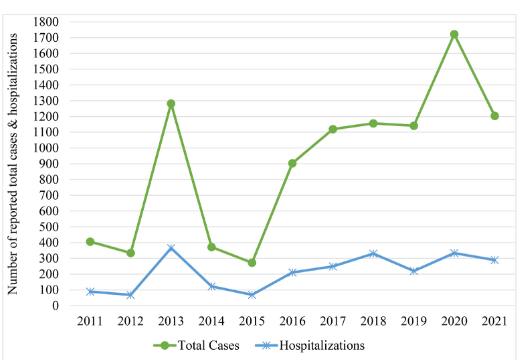A review in Heliyon (Volume 8, Issue 11, November 2022, e11571) reviews outbreaks of antibiotic resistant Salmonella in poultry. Salmonella causes the highest amount of foodborne illness among bacteria (15.5 cases per 100,000) and causes an estimated 410,000 antibiotic-resistant infections each year in the U.S. Over-and misusage of antibiotics, causes Salmonella to develop resistance and may render antibiotics inoperative in a foodborne outbreak. A problematic threat from antibiotic resistance extensively drug resistant (XDR) Salmonella Typhi that is resistant to all tested antibiotic classes except macrolides and carbapenems. Antibiotics belonging to macrolides and carbapenems classes are more effective in treating diseases caused by XDR Salmonella Typhi. Because of increasing AMR in Salmonella, few antibiotics are available to treat patients with severe infections. Controlling AMR is not a simple process that can be achieved overnight. Rules and regulations must be implemented to control the overuse/misuse of antibiotics by regulatory agencies. Reduction of usage of antibiotics in animal husbandry is crucial. The FDA must continue to monitor the effect of the restrictions placed on the use and sale of antibiotics for food-producing animals. @https://www.sciencedirect.com/science/article/pii/S2405844022028596
An overview of outbreaks and prevalence of antimicrobial resistant Salmonella in poultry in the United States
No comments

